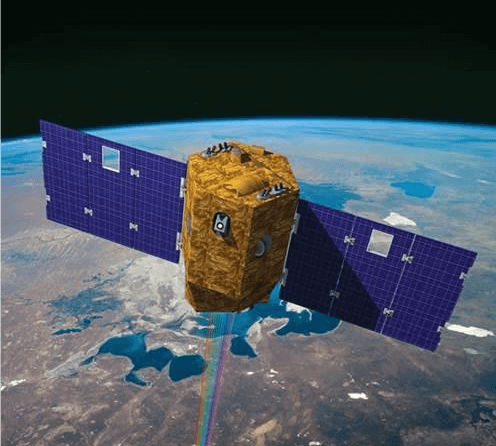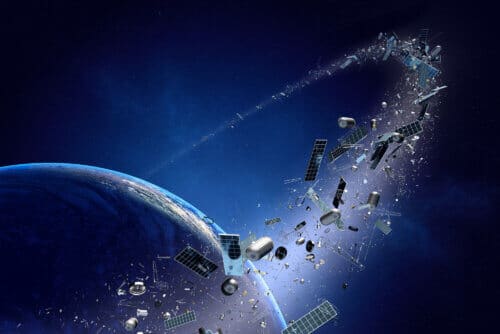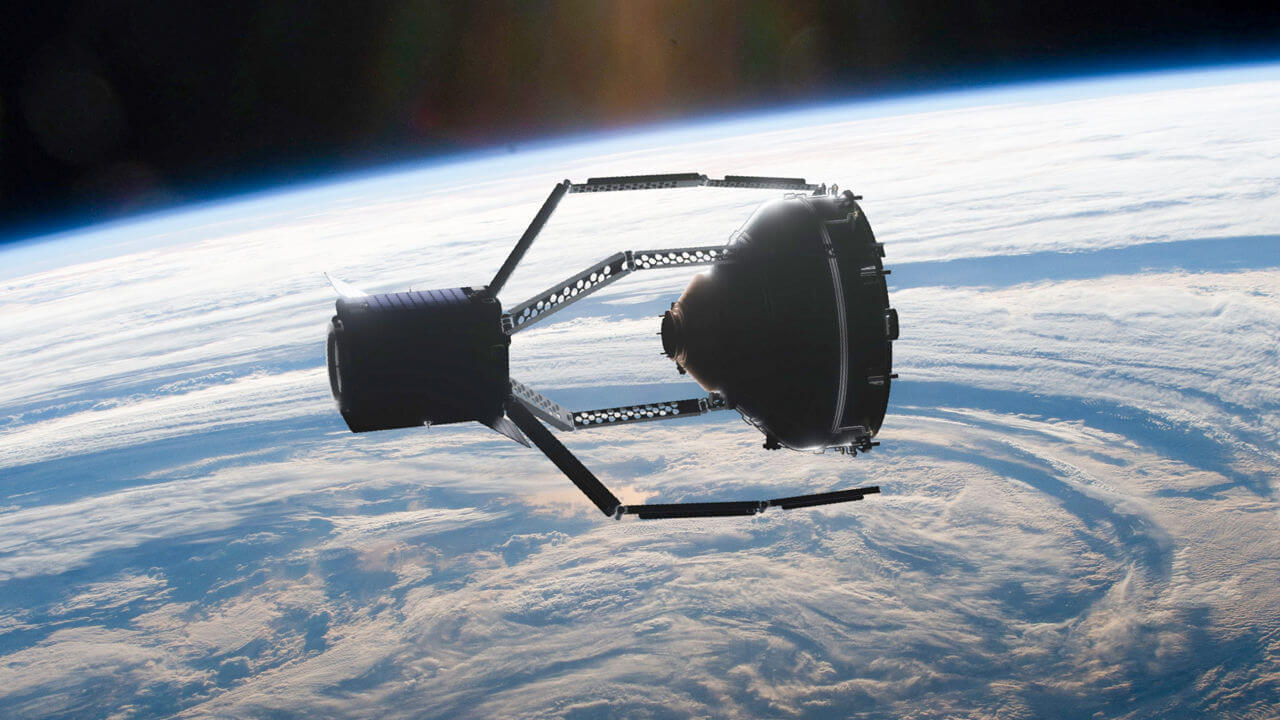Remnants of satellites, pieces of missiles and other pieces of equipment are currently floating around the Earth and can damage spacecraft and active facilities. A Swiss company will soon begin to try and remove this debris in the largest space cleanup operation to date
By Yael Mor, Angle - news agency for science and the environment

Last month she was accepted by the aerospace industry warning There is a high risk of a collision between the Venus satellite of the Israeli and French space agencies and the Terra satellite of the American space agency. Beyond the fact that the collision, which was avoided, could have harmed the continued activity of these satellites (the French-Israeli is taking aerial photographs of Israel and the American is mapping the climate and its changes), it illustrates the great density that currently exists in the space around the Earth. One of the main reasons for this density is a growing problem that worries the space agencies in the world today: space debris.
Since the first artificial satellite, Sputnik 1, was sent into space 63 years ago, humans have launched over 9,000 different spacecraft and satellites, which were used and are used by us today for communication, research, espionage, weather forecasting and more. However, this also led to the creation of a lot of debris: decommissioned satellites floating outside the atmosphere, remnants of rockets and launchers, and pieces of forgotten equipment from research spacecraft. All of these accumulate in space, around the earth, and may damage active satellites and even manned spacecraft.
Now, the European Space Agency (ESA) has chosen the company clear space the Swiss to lead the first ever space cleaning mission.
"The dimensions of the waste items in space can range from the size of a nail to the size of a truck," says Prof. Yoav Yair, dean of the School of Sustainability at the Interdisciplinary Center in Herzliya, who previously served as the coordinator of the Madex project - the Israeli experiment carried out by the astronauts on the Columbia space shuttle of the American space agency . According to the European Space Agency, there are about 900 pieces of waste in space that are one centimeter or more in size, and over 130 million items that are a millimeter or more in size.
According to Yair, even such tiny waste particles are a risk. "These objects move at a speed that can reach 32 kilometers per hour, so they have enormous kinetic energy," he says. "Consequently, even a particle the size of a screw that hits a spacecraft or satellite can damage and even destroy them."

Why did the space debris problem arise in the first place? "Due to short-sightedness, we did not pre-plan the spacecraft so that they would destroy themselves at the end of the operation," says Yair. "They just didn't see it as a problem that needed to be addressed."
According to the Kessler model, developed in 1978 by scientist Donald J. Kessler from NASA, the more debris there is in space, the frequency of collisions between the items will increase. This will mean that more and more of the items will break, and space will be flooded with countless tiny fragments - a situation that could completely block the possibility of launching satellites or manned space flights into low orbit. "There have already been cases where satellites went out of action as a result of being hit by a piece of debris," says Yair. "If we don't clean up the space, the risk of something bad happening will intensify."
move a rag through space
Cleaning space debris is not a simple task - you can't simply sweep, vacuum or move a rag like at home. Since the 70s, NASA has been examining various proposals for ways to do this: harpoon special that you will pay for the item of waste, Networks that will envelop the particles and pull them out of their place, metal cable that will attract waste with the help of the Earth's magnetic field and even a satellite that will track a large piece of waste and stick to it using "Space glue” However, so far none of them have been implemented in practice.
In November 2020, ClearSpace signed a $104 million contract with the European Space Agency, under which it will lead the first mission to remove an item of debris from space. To this end, the company developed the ClearSpace-1 spacecraft, which weighs 500 kilograms and has four robotic arms. On its first mission, scheduled for 2025, the spacecraft will grab and eject the top of VESPA) Vega Secondary Payload Adapter), part of a system used to carry and place satellites in space and which is owned by the European Space Agency. This is an object weighing 112 kilograms and the size of which is similar to that of a small satellite (that is, a little bigger than a washing machine), which was launched in 2013 and which currently hovers at an altitude of about 660 kilometers.
According to the plan, the ClearSpace-1 spacecraft will first be launched into an orbit at a low altitude of 500 kilometers, where critical tests will be carried out, then it will ascend to the target orbit - and capture VESPA with its four arms. In the final stage, the two objects will together make a controlled entry into the atmosphere, during which both will burn up.

Man-made meteorites
Large objects like VESPA pose a threat not only to the objects in space, but also to the humans living on Earth. "The pieces of waste do not stay in the same orbit all the time, the Earth's gravity pulls them further and further towards the atmosphere," says Yair. "If they reach the atmosphere, the small particles burn up in it - but the large objects may survive the entry into it, and act similarly to meteorites. The damage they are able to cause on Earth could be enormous."
Due to this, continuous monitoring and mapping of all waste items found in space is currently carried out. "There are programs that predict potential collisions of debris fragments based on monitoring that has been carried out for decades, with the aim of giving as early a warning as possible," says Yair. "Furthermore, in order to prevent damage to the Earth, it is necessary to accurately monitor the decay times - the slowing down of the trajectory of the debris itself in space towards the atmosphere - especially when it comes to large objects."
plan in advance the end
In very rare cases, the space object can return to Earth on its own. Thus, in 2001, When the space station Mir Having completed its mission, it entered the atmosphere on an orderly course pre-planned to pass over as much uninhabited area as possible, and disintegrated over the South Pacific Ocean, without damage to property or human life.
Another way to deal with the problem is to plan in advance the end of life of the object that is launched into space. "Entrepreneur Elon Musk's company SpaceX, for example, produces a launcher that lands after launch: after it accelerates the rocket and the satellite and completes its mission, it performs a controlled landing," says Yair. "This way you can recycle the tool and prevent dirt and waste."
"Today, anyone interested in launching a satellite or spacecraft has to present a plan detailing the end-of-life planning of what is being launched," adds Yair. "Recently, we see more and more companies planning to 'hunt' the satellites that have ended their activity and bring them back to Earth intact: repair them, replace their batteries, refurbish them, take care of their computers and more, and then launch them again. It's a new field that keeps developing", he concludes.
More of the topic in Hayadan:
- The satellite is in the service of collecting space debris for NASA
- Six ways artificial intelligence can help space exploration
- The International Space Station was diverted from its orbit to avoid colliding with space debris
- A piece of space debris from the satellite that the Chinese blew up in 2007 damaged a Russian satellite
- The location of the object that hit the space station - a piece of space debris
